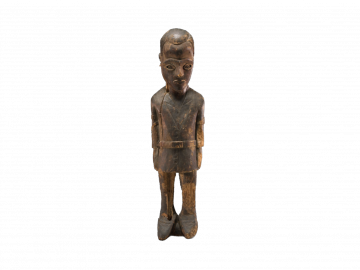Ced’art‘s drawings illustrates a contemporary world panorama in an original visual language of its own. Meticulously put on the 100 cm wide paper with a ballpoint pen, it shows in an astonishingly clear path of complex globalized mechanisms from the Congo itself. Africa appears to be part of a commodity and migration cycle organized by the western industrialized countries in their favor, while the black continent is drawn as a source of raw materials and a source of conflict. The long strains of ants are striking as refugees and migrant workers trying to find their way to Europe at high risk. The swarms of bees, on the other hand, denote more privileged African classes (who can afford to fly) that safely store their nectar in the European banking world, which they accumulate in their home countries deriving from the needs of their fellow citizens.
The sheet is not really critical. It is part of a dawn of a previously invisible and powerless community of former plantation workers who, thanks to art and thanks to the sale of their works on the international art market, are now building a new life. They reflect the world that made their great-grandparents slaves, offered their parents an income of one dollar a day, and gave them little better prospects themselves. But today, Ced'art Tamasala and the other members of CATPC have become internationally visible with a new art that is not Congolese, not African, not Western, but all this at the same time, as a result of a cultural globalization that is our future.






















